Benefits of Having a Dedicated Sewing Space
Setting up a dedicated sewing space can be a game changer for sewing enthusiasts and professionals alike. Imagine walking into a room that is solely designed for your creative outlet, where every tool, fabric, and pattern is organized and easily accessible. This not only enhances your organization but also fuels your creativity and boosts your productivity. In this article, we will dive into the numerous advantages of creating a dedicated sewing area, exploring how it can transform your sewing experience from chaotic to harmonious.
One of the most significant benefits of a dedicated sewing space is the enhanced organization it provides. When you have a specific area for your sewing projects, you can neatly arrange your tools, fabrics, and patterns. This makes it easier to find what you need without sifting through clutter. Imagine having a designated spot for everything, from your scissors to your sewing machine. With everything in its place, you’ll spend less time searching for supplies and more time bringing your creative visions to life.
Having a designated sewing area can significantly boost your productivity. When you eliminate distractions and create a space solely for sewing, you can focus on your projects without interruptions. Think about it: how often do you find yourself distracted by household chores or other tasks when trying to sew? A dedicated space minimizes these distractions, allowing for more focused work sessions. This leads to quicker project completion and a greater sense of accomplishment.
With everything organized and in its rightful place, you can dramatically reduce your setup time. Instead of spending precious minutes unpacking and setting up, you can dive right into your sewing projects. This efficiency not only makes the creative process more enjoyable but also allows you to maximize your sewing time. The less time you spend preparing, the more time you have to sew!
Another fantastic aspect of a dedicated sewing space is the ability to maintain a permanent setup. You can leave your sewing machine and materials out, ready for action whenever inspiration strikes. No more packing and unpacking for each session! This convenience means you can jump into your projects at a moment's notice, making it easier to seize those bursts of creativity.
An organized workspace fosters a smoother workflow. When your tools and materials are within reach, you can move seamlessly between tasks. This continuity helps maintain momentum on your projects, allowing you to create with ease. Imagine effortlessly transitioning from cutting fabric to sewing without the frustration of searching for misplaced items. It’s all about creating a space that supports your creative journey.
Your dedicated sewing space can also serve as a wellspring of creative inspiration. When surrounded by your favorite fabrics, colors, and tools, you’re more likely to feel motivated to experiment and try new techniques. Personalizing your space with items that inspire you can ignite your creativity and encourage you to push the boundaries of your sewing abilities.
Designing a sewing space with comfort in mind can significantly enhance your overall sewing experience. By prioritizing ergonomics, you can reduce strain on your body, allowing you to sew for longer periods without discomfort. This is especially important for those long sewing sessions when you’re completely engrossed in your project.
Investing in ergonomic seating is essential for preventing discomfort during those marathon sewing sessions. A good chair will provide the support you need, allowing you to focus on your craft without physical distractions. Imagine being able to sew for hours without feeling the need to shift or take breaks due to discomfort. That’s the kind of experience a dedicated sewing space can provide!
Good lighting is crucial for sewing, and a dedicated space allows you to install appropriate lighting that reduces eye strain and enhances visibility for detailed work. Whether it’s natural light streaming in from a window or strategically placed lamps, the right lighting can make a world of difference in your sewing experience.
Creating a dedicated sewing area lets you express your personal style. This space can be uniquely yours, filled with colors, patterns, and decor that resonate with you. When your sewing area reflects your personality, it becomes a more enjoyable place to work, enhancing your creative flow.
Incorporating decorative elements, such as wall art or color schemes, can make your sewing space inviting and inspiring. Think of it as your creative sanctuary, where every detail contributes to your artistic journey. The more you love your space, the more you’ll want to spend time in it, leading to more sewing projects and greater satisfaction.
Finally, designing your sewing area with functionality in mind ensures that it meets your specific needs. A practical yet aesthetically pleasing space can significantly enhance your sewing experience. Consider your workflow and how you like to work, and create a space that supports those preferences. After all, a well-designed sewing area can be both beautiful and functional, making it the perfect backdrop for your creative endeavors.
Q: How do I start creating my dedicated sewing space?
A: Begin by choosing a location that has enough room for your sewing machine, tools, and materials. Consider what you need for organization, such as shelves or storage bins, and personalize the space with colors and decor that inspire you.
Q: What are some essential items to include in my sewing space?
A: Essential items include a sewing machine, cutting mat, rotary cutter, rulers, pins, and a variety of fabrics. Additionally, consider investing in good lighting and ergonomic seating for comfort.
Q: Can a dedicated sewing space help me become a better sewer?
A: Absolutely! A dedicated space can enhance your organization, improve your workflow, and inspire creativity, all of which contribute to skill development and overall enjoyment of sewing.
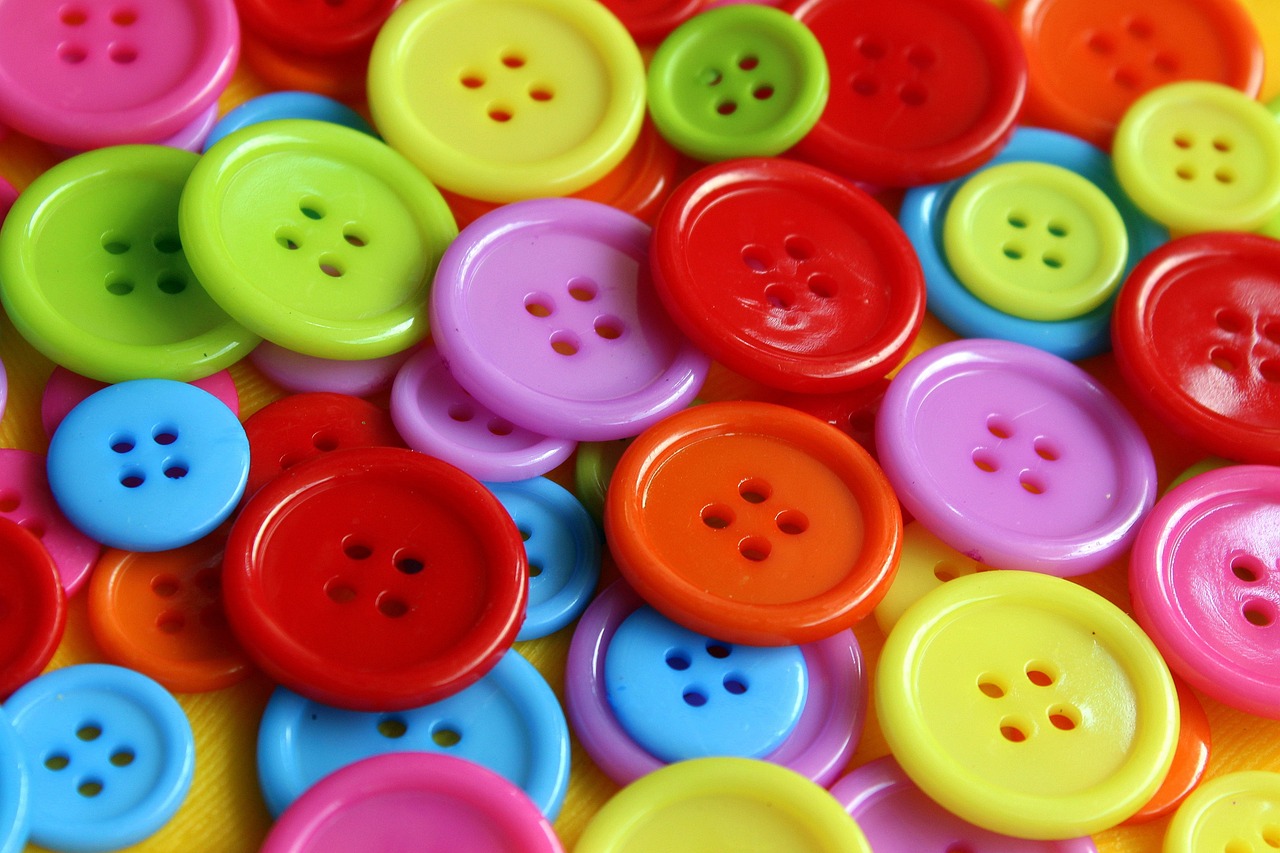
Enhanced Organization
When you have a dedicated sewing space, the first and foremost benefit is the it brings to your creative process. Imagine walking into a room where everything is in its rightful place, where your tools, fabrics, and patterns are neatly arranged and easily accessible. This level of organization not only minimizes clutter but also creates a serene environment that fosters creativity. Think of it as a well-orchestrated symphony; when each instrument knows its part, the music flows beautifully. In the same way, having an organized sewing area allows your creative juices to flow without interruption.
One of the key aspects of an organized sewing space is the use of storage solutions that cater to your specific needs. Consider incorporating a variety of storage options, such as:
- Clear bins: Perfect for storing fabrics, allowing you to see what you have at a glance.
- Drawer organizers: Great for keeping your sewing tools, threads, and notions sorted and easy to find.
- Wall-mounted shelves: Ideal for displaying your fabric stash or keeping frequently used items within reach.
By implementing these storage solutions, you can create a space where everything has its designated spot. This not only saves time when you're looking for materials but also helps you maintain focus on your projects. After all, who hasn’t wasted precious minutes rummaging through a cluttered drawer or searching for that elusive pair of scissors?
Moreover, a dedicated sewing area allows you to categorize your materials and tools based on projects or types. For instance, you might organize your fabrics by color, type, or season. This method of organization can be incredibly beneficial, especially when you're in the midst of multiple projects. Picture this: you’re working on a summer dress, and all the fabrics, patterns, and tools related to that project are neatly arranged together. This not only speeds up your workflow but also keeps your mind clear, allowing you to focus on creating rather than searching.
In addition to physical organization, having a dedicated sewing space can also help you establish a routine. When everything is in its place, you can set aside specific times for sewing, knowing that you can jump right into your work without the hassle of setting up each time. This consistency can lead to greater productivity and a more fulfilling sewing experience.
In summary, the enhanced organization that comes with a dedicated sewing space is invaluable. From reducing clutter to improving efficiency, an organized workspace can transform your sewing experience. So, if you’re still sewing at the kitchen table or in a corner of your living room, it might be time to consider carving out a special space just for your creative endeavors.
Q: How can I start organizing my sewing space?
A: Begin by decluttering your current space. Sort through your materials and tools, and decide what you need to keep, donate, or discard. Then, invest in storage solutions that suit your needs, such as bins, shelves, and organizers.
Q: What are some essential items to have in a dedicated sewing space?
A: Key items include a sewing machine, cutting mat, rotary cutter, rulers, fabric scissors, pins, and a variety of storage solutions to keep your materials organized.
Q: How can I maintain organization in my sewing space?
A: Regularly assess your space and reorganize as necessary. Make it a habit to put things back in their designated spots after each sewing session, and periodically review your supplies to keep clutter at bay.
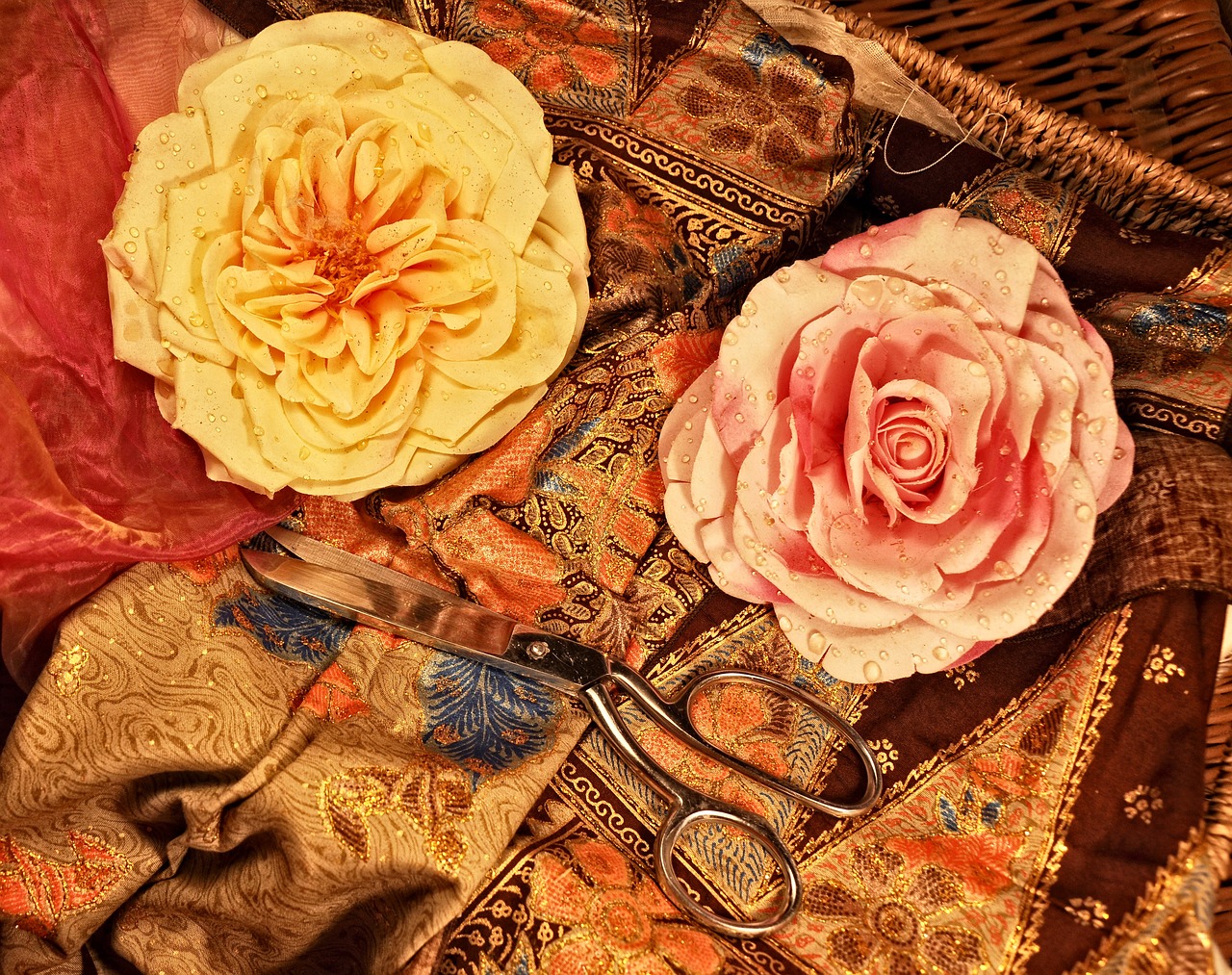
Increased Productivity
Having a dedicated sewing area can significantly boost your productivity, and let me tell you, it’s a game changer for sewing enthusiasts and professionals alike! Imagine walking into a space where everything is neatly organized and easily accessible. You won’t have to rummage through drawers or search high and low for that elusive pair of scissors or the perfect fabric swatch. Instead, you can dive right into your projects with enthusiasm and focus. This streamlined environment reduces distractions, allowing you to immerse yourself in your creative flow.
One of the biggest advantages of a dedicated sewing space is the reduced setup time. Think about it—when your sewing machine, threads, and tools are all in one place, you can jump straight into sewing without wasting precious minutes setting up. This is especially beneficial when you have a tight schedule or are working on multiple projects. The less time you spend preparing, the more time you have to create! A dedicated space means that your sewing machine can remain in its place, ready for action whenever inspiration strikes.
Moreover, an organized workspace fosters a smoother workflow. Picture this: you’re working on a quilt, and you need to switch from cutting fabric to sewing seams. In a cluttered environment, this transition can feel like a chore, but in a well-designed sewing area, everything flows seamlessly. You can move from one task to another without losing your rhythm, maintaining momentum on your projects. This fluidity not only enhances your productivity but also makes the entire sewing experience more enjoyable.
But let’s not forget about the power of creative inspiration in a dedicated sewing space. When you surround yourself with your favorite fabrics, colors, and tools, you’re more likely to feel inspired to create. Your personal touches—be it a vibrant color scheme or decorative elements—can spark new ideas and encourage experimentation. This is where the magic happens! The more you enjoy your space, the more productive you’ll be.
In conclusion, a dedicated sewing area is not just a luxury; it’s an investment in your productivity and creativity. By minimizing distractions, reducing setup time, and fostering an inspiring environment, you’ll find yourself completing projects faster and with greater satisfaction. So, if you’re serious about your sewing, consider carving out that special space just for you!
- How can I create a dedicated sewing space in a small area?
Even in a small space, you can maximize your sewing area by using vertical storage solutions, such as shelves and pegboards, to keep everything organized and accessible. - What furniture is essential for a sewing space?
A sturdy sewing table, comfortable chair, and good lighting are key elements that will enhance your sewing experience. - How do I keep my sewing area organized?
Invest in storage bins, labels, and drawer organizers to keep your tools and materials sorted and easy to find.
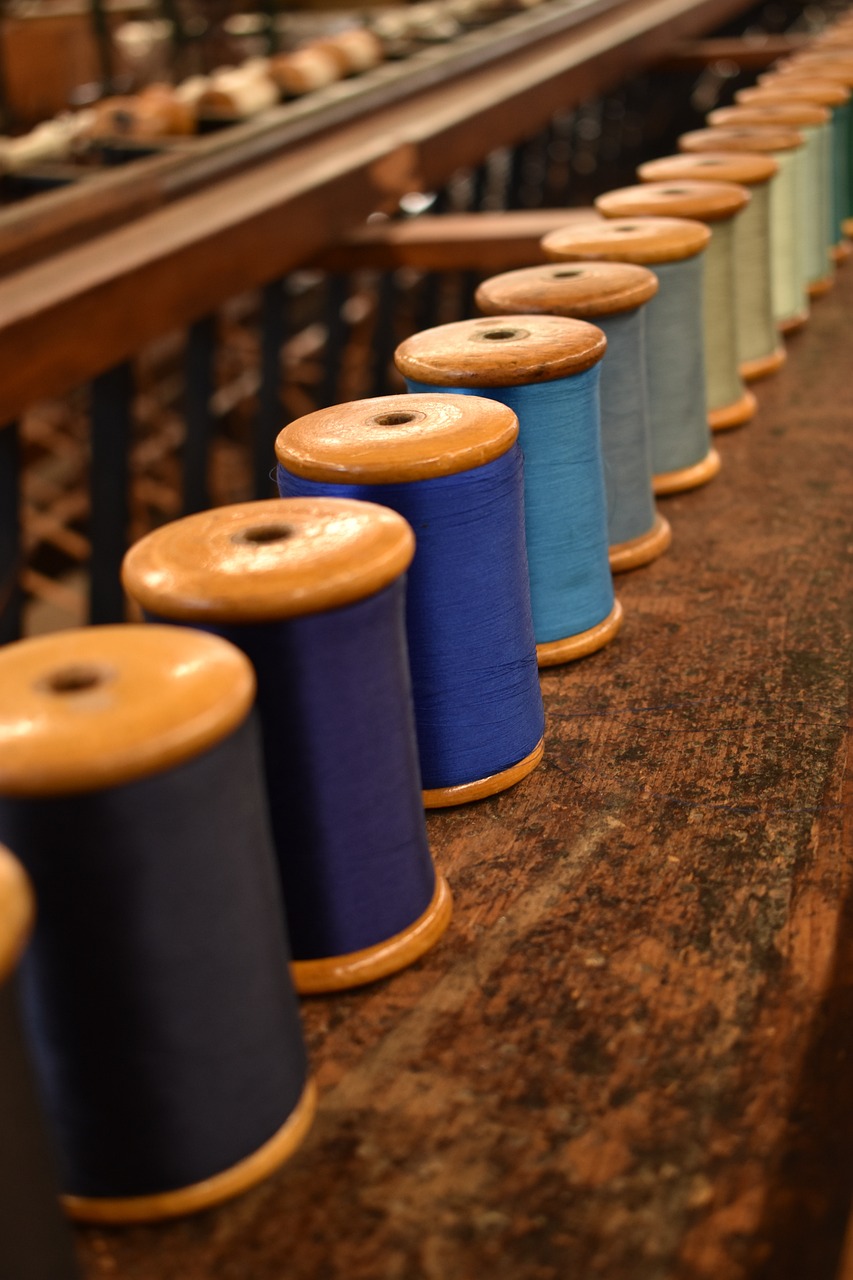
Reduced Setup Time
This article explores the numerous advantages of setting up a dedicated sewing area, including improved organization, enhanced creativity, and increased productivity for sewing enthusiasts and professionals alike.
A dedicated sewing space allows for better organization of tools, fabrics, and patterns, making it easier to find what you need and reducing clutter in your home.
Having a designated sewing area can significantly boost your productivity, as it minimizes distractions and allows for more focused work sessions, leading to quicker project completion.
Imagine diving into your sewing project without the hassle of setting everything up each time. With a dedicated sewing space, you can achieve just that! The beauty of having a designated area is that it allows you to reduce setup time to a bare minimum. No more dragging your sewing machine out of the closet or searching for that elusive pair of scissors. Everything you need is right at your fingertips, organized and ready to go.
This efficiency not only saves time but also enhances your sewing experience. You can jump straight into your creative flow without interruptions. Think about it: when you spend less time preparing your workspace, you can dedicate more time to the actual sewing. This leads to a more fulfilling and enjoyable creative process. Plus, when everything is in its designated spot, you can easily keep track of your projects and materials, ensuring that nothing gets lost in the shuffle.
Here are some ways a dedicated sewing space contributes to reduced setup time:
- Everything in One Place: Your sewing machine, tools, and materials are all located in a single area, eliminating the need for constant back-and-forth trips.
- Quick Access to Supplies: With well-organized storage solutions, you can grab what you need quickly, allowing for seamless transitions between tasks.
- Less Distraction: A dedicated space minimizes distractions, enabling you to focus solely on your sewing without the interruptions of a multi-purpose room.
In essence, reduced setup time transforms your sewing sessions into a more fluid and enjoyable experience. You can immerse yourself in your projects, experiment with new ideas, and ultimately create more without feeling bogged down by the logistics of setup. So, if you're serious about your sewing, consider the immense benefits that come with carving out a special space just for your craft.
A dedicated space means you can leave your sewing machine and materials set up, eliminating the hassle of packing and unpacking for each session. This permanence not only saves time but also allows you to maintain your creative momentum. Imagine being able to walk into your sewing room and immediately start working on your project without the mental load of setting everything up. It's a game changer!
An organized workspace fosters a smoother workflow, allowing you to move seamlessly between tasks and maintain momentum on your projects. With everything in its rightful place, you can easily shift from cutting fabric to sewing seams without skipping a beat. This streamlined process not only boosts productivity but also enhances the overall enjoyment of your sewing experience.
A personalized sewing space can serve as a source of inspiration, filled with fabrics, colors, and tools that spark your creativity and encourage experimentation.
Designing a sewing space with comfort in mind can lead to better posture and reduced strain, enhancing your overall sewing experience and well-being.
Investing in ergonomic seating can help prevent discomfort during long sewing sessions, allowing you to focus on your craft without physical distractions.
Good lighting is essential for sewing; a dedicated space allows you to install appropriate lighting that reduces eye strain and enhances visibility for detailed work.
Creating a dedicated sewing area lets you express your personal style, making the space uniquely yours and more enjoyable to work in.
Incorporating decorative elements, such as wall art or color schemes, can make your sewing space inviting and inspiring, enhancing your creative environment.
Designing your sewing area with functionality in mind ensures that it meets your specific needs, making it both a practical and aesthetically pleasing space.
Q: What are the essential items I should have in my dedicated sewing space?
A: Essential items include a sewing machine, cutting mat, rotary cutter, rulers, pins, thread, and a variety of fabrics. Organizing these items in a way that makes them easily accessible will enhance your sewing experience.
Q: How can I make my sewing space more inspiring?
A: Personalize your space with colors and decor that inspire you. Consider displaying your favorite fabrics, creating a mood board, or adding inspirational quotes on the walls.
Q: Is it necessary to have a dedicated sewing space?
A: While it's not mandatory, having a dedicated sewing space can significantly improve your sewing experience by providing organization, reducing setup time, and enhancing creativity.
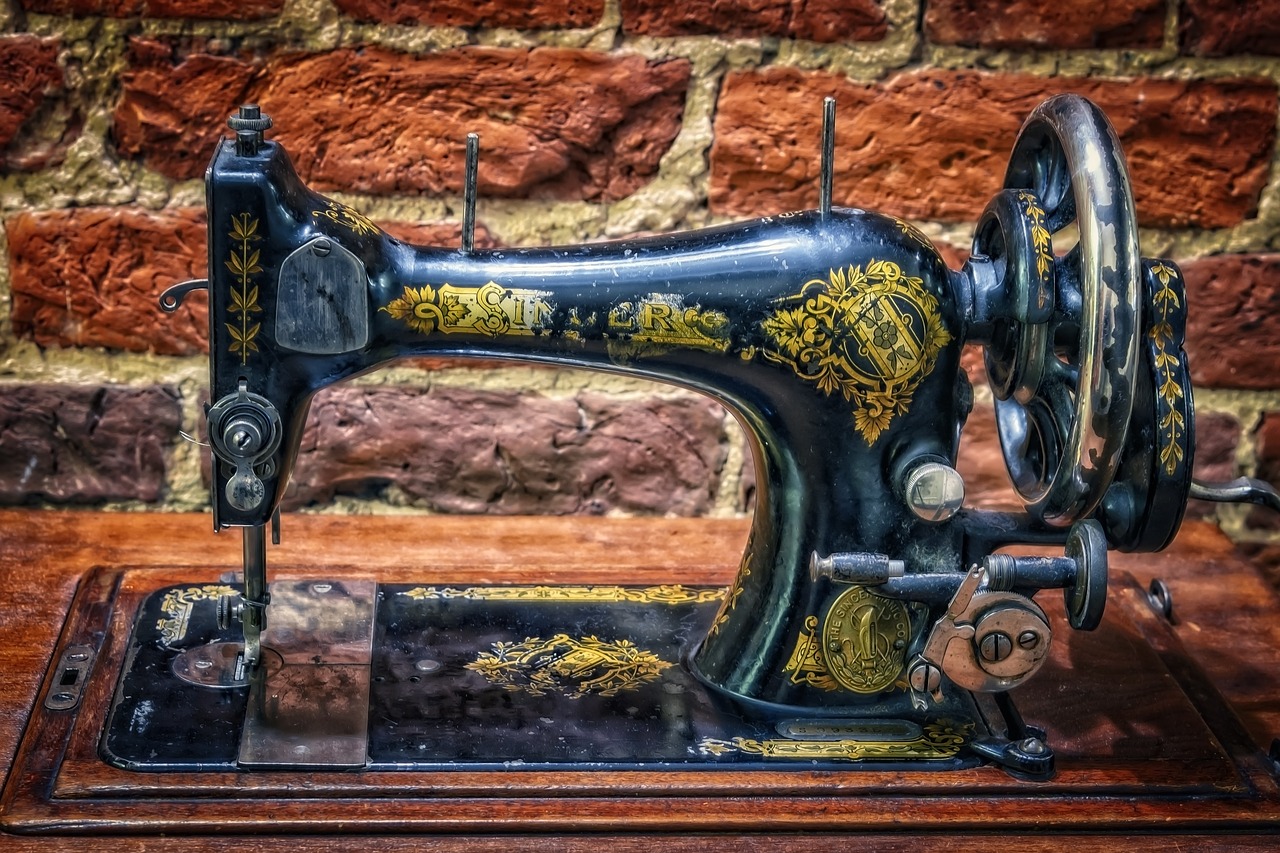
Permanent Setup
When you create a dedicated sewing space, one of the most significant advantages is the ability to maintain a . Imagine walking into your sewing area and seeing everything exactly where you left it, ready for you to dive right in. No more lugging your sewing machine out of the closet, unfolding the table, or searching for that elusive spool of thread! With a permanent setup, your sewing projects can flow seamlessly, allowing you to pick up right where you left off with minimal fuss.
Having your sewing machine and materials set up at all times means you can take advantage of those fleeting moments of inspiration. Whether it's a late-night idea or a spontaneous weekend project, you can jump right into sewing without the hassle of preparation. This convenience not only saves time but also encourages you to explore your creativity more freely. Think of your sewing space as a creative sanctuary—a place where ideas can flourish without the interruptions of setup and takedown.
Furthermore, a permanent setup allows for better organization of your tools and materials. You can designate specific areas for different items, such as:
- Fabrics: Neatly folded and stored in labeled bins or on shelves.
- Tools: Scissors, pins, and other essentials can have their own dedicated spots.
- Patterns: Keep your patterns organized in a folder or on a bulletin board for easy access.
This level of organization not only makes your sewing space more functional but also enhances your overall enjoyment. You won't waste precious time searching for tools or materials, allowing you to focus on what you love most—creating beautiful garments and projects. In essence, a permanent setup transforms your sewing area from a temporary workspace into a creative hub that invites inspiration and productivity.
- How can I create a dedicated sewing space in a small area? - Consider using multi-functional furniture, such as a foldable table or storage ottoman, that can be easily tucked away when not in use.
- What are the essential tools for a sewing space? - Basic tools include a sewing machine, scissors, pins, measuring tape, and fabric markers. As you progress, you can add specialized tools that suit your projects.
- How do I maintain organization in my sewing space? - Regularly declutter and categorize your materials. Use clear bins and labels for easy identification and access.
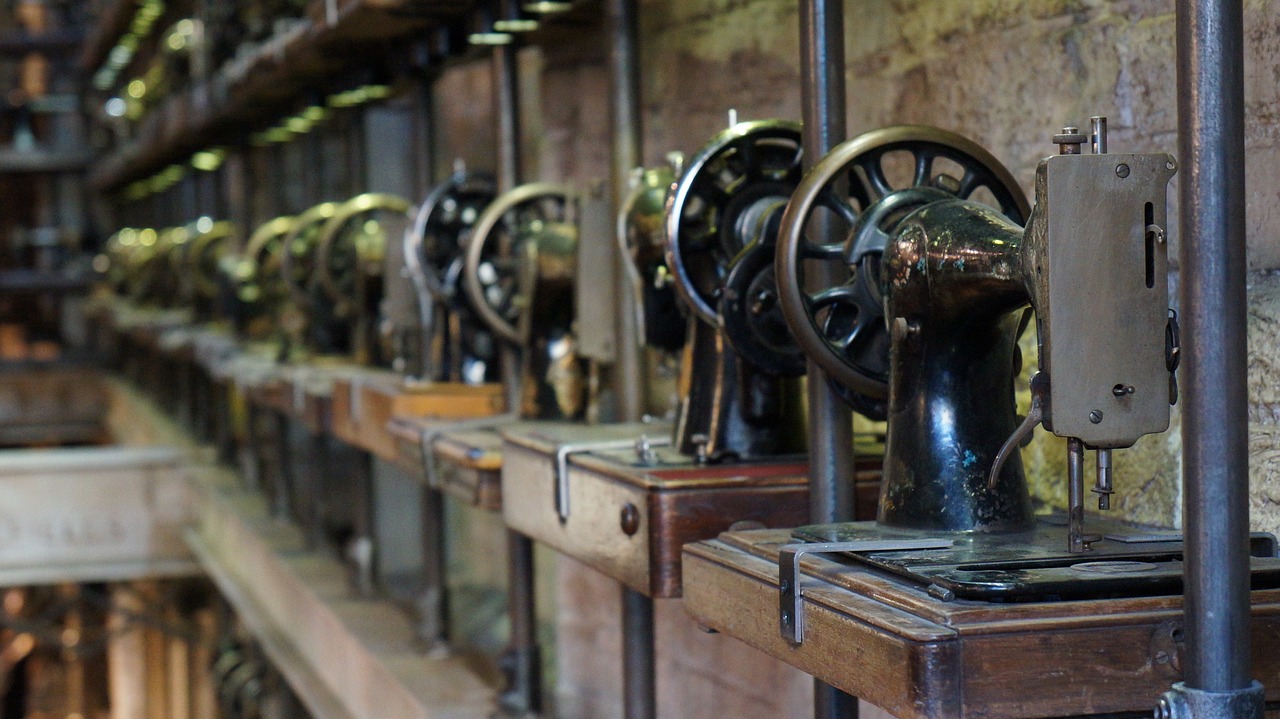
Improved Workflow
This article explores the numerous advantages of setting up a dedicated sewing area, including improved organization, enhanced creativity, and increased productivity for sewing enthusiasts and professionals alike.
A dedicated sewing space allows for better organization of tools, fabrics, and patterns, making it easier to find what you need and reducing clutter in your home.
Having a designated sewing area can significantly boost your productivity, as it minimizes distractions and allows for more focused work sessions, leading to quicker project completion.
With everything in its place, you can spend less time setting up and more time sewing, making your creative process more efficient and enjoyable.
A dedicated space means you can leave your sewing machine and materials set up, eliminating the hassle of packing and unpacking for each session.
Creating an organized sewing space is like laying down a smooth highway for your creativity. When everything is easily accessible, your workflow transforms from a bumpy ride to a seamless journey. Imagine not having to dig through piles of fabric or search for that elusive pair of scissors; instead, each tool and material is right where you need it. This level of organization not only saves time but also reduces frustration, allowing you to maintain your focus on the project at hand.
Consider the layout of your sewing area. Position your sewing machine, cutting table, and storage in a way that allows for smooth transitions between tasks. For example, placing your cutting table next to your sewing machine means you can easily move fabric from one station to the next without unnecessary back-and-forth. This thoughtful arrangement fosters a rhythm in your work, allowing you to dive deeper into your projects without interruption.
Additionally, an organized space encourages you to keep your tools and materials in good condition. When you have a designated spot for everything, you’re less likely to misplace items or let them get damaged. This not only extends the life of your supplies but also enhances your overall sewing experience. You can focus on being creative rather than worrying about where you left your favorite fabric or whether your scissors are still sharp.
In summary, an improved workflow in your sewing space can lead to:
- Increased Efficiency: Spend less time searching and more time creating.
- Enhanced Focus: Minimize distractions to maintain your creative flow.
- Better Organization: Keep your tools and materials in top condition.
By investing time into creating a well-organized sewing area, you'll find that your projects become more enjoyable and productive. So, why not take the plunge and design a space that works for you?
A personalized sewing space can serve as a source of inspiration, filled with fabrics, colors, and tools that spark your creativity and encourage experimentation.
Designing a sewing space with comfort in mind can lead to better posture and reduced strain, enhancing your overall sewing experience and well-being.
Investing in ergonomic seating can help prevent discomfort during long sewing sessions, allowing you to focus on your craft without physical distractions.
Good lighting is essential for sewing; a dedicated space allows you to install appropriate lighting that reduces eye strain and enhances visibility for detailed work.
Creating a dedicated sewing area lets you express your personal style, making the space uniquely yours and more enjoyable to work in.
Incorporating decorative elements, such as wall art or color schemes, can make your sewing space inviting and inspiring, enhancing your creative environment.
Designing your sewing area with functionality in mind ensures that it meets your specific needs, making it both a practical and aesthetically pleasing space.
- What are the essential elements of a dedicated sewing space? A good sewing space should include a sewing machine, a cutting table, storage for fabrics and tools, and good lighting.
- How can I organize my sewing supplies effectively? Use bins, shelves, and pegboards to keep your supplies visible and accessible. Categorize items by type or project for better organization.
- Can I create a sewing space in a small area? Absolutely! Even a small corner can be transformed into a functional sewing space with smart storage solutions and multi-purpose furniture.
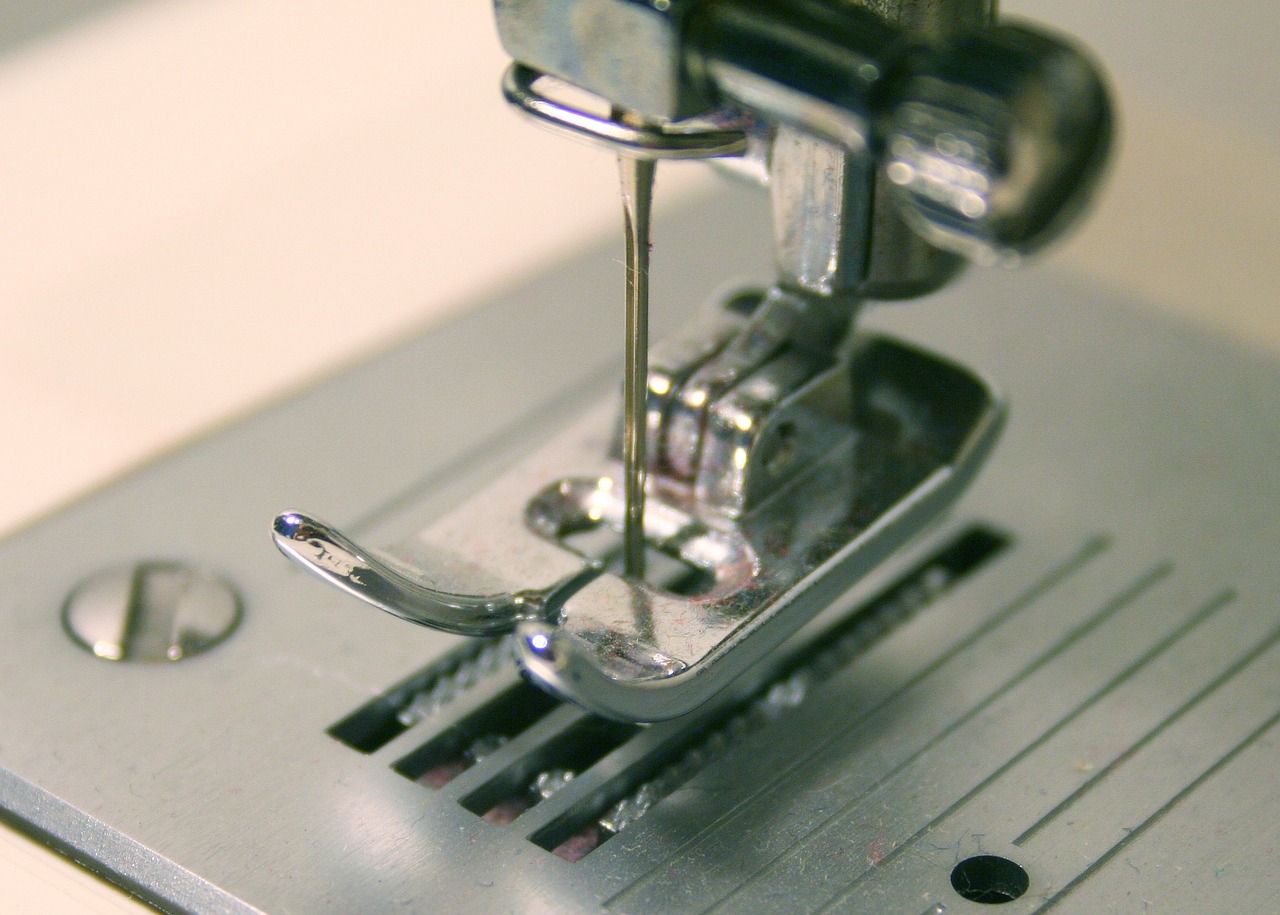
Creative Inspiration
Imagine stepping into a space that feels like a creative sanctuary, where every corner is filled with potential and inspiration. A dedicated sewing area can be just that! It’s not just about having a place to sew; it’s about cultivating an environment that ignites your imagination and fuels your passion for crafting. When you surround yourself with a variety of fabrics, threads, and tools, you’re not just organizing your materials; you’re creating a canvas of possibilities.
One of the most exciting aspects of having a personalized sewing space is the ability to curate it according to your unique style and preferences. Picture this: vibrant bolts of fabric neatly arranged, each one whispering stories of future projects. The colors and textures can serve as a constant source of inspiration, encouraging you to experiment and push the boundaries of your creativity. Think of your sewing area as an artist's palette, where every hue and shade can spark a new idea or project.
Furthermore, the layout of your sewing space can significantly influence your creative flow. By organizing your tools and materials in a way that makes sense to you, you can easily access what you need without interrupting your creative momentum. For instance, having your sewing machine, cutting mat, and fabric swatches within arm’s reach can streamline your process, allowing you to transition smoothly from one task to another. This seamless workflow not only enhances productivity but also keeps the creative juices flowing.
To truly harness the power of your sewing space, consider incorporating elements that inspire you. Whether it’s a vision board filled with ideas, a collection of your favorite sewing books, or even a cozy chair where you can sit back and brainstorm, these touches can transform your workspace into a hub of creativity. You might even want to include:
- Colorful wall art that reflects your personality and style
- Inspiring quotes that motivate you to tackle new projects
- Plants that bring a touch of nature and freshness to your space
Ultimately, your dedicated sewing area should be a reflection of you—a place where you feel comfortable, inspired, and ready to create. So, as you design your sewing sanctuary, think about what elements will help you feel most inspired. After all, the more you love your space, the more you’ll want to spend time there, and the more creative you will become!
- What are the essential items to include in a dedicated sewing space?
Key items include a sewing machine, cutting mat, storage for fabrics and tools, good lighting, and a comfortable chair.
- How can I make my sewing space more inspiring?
Incorporate personal touches like artwork, color schemes, and motivational quotes that resonate with you.
- Is it necessary to have a dedicated sewing space?
While it's not mandatory, having a dedicated space can significantly enhance your organization, productivity, and creativity.
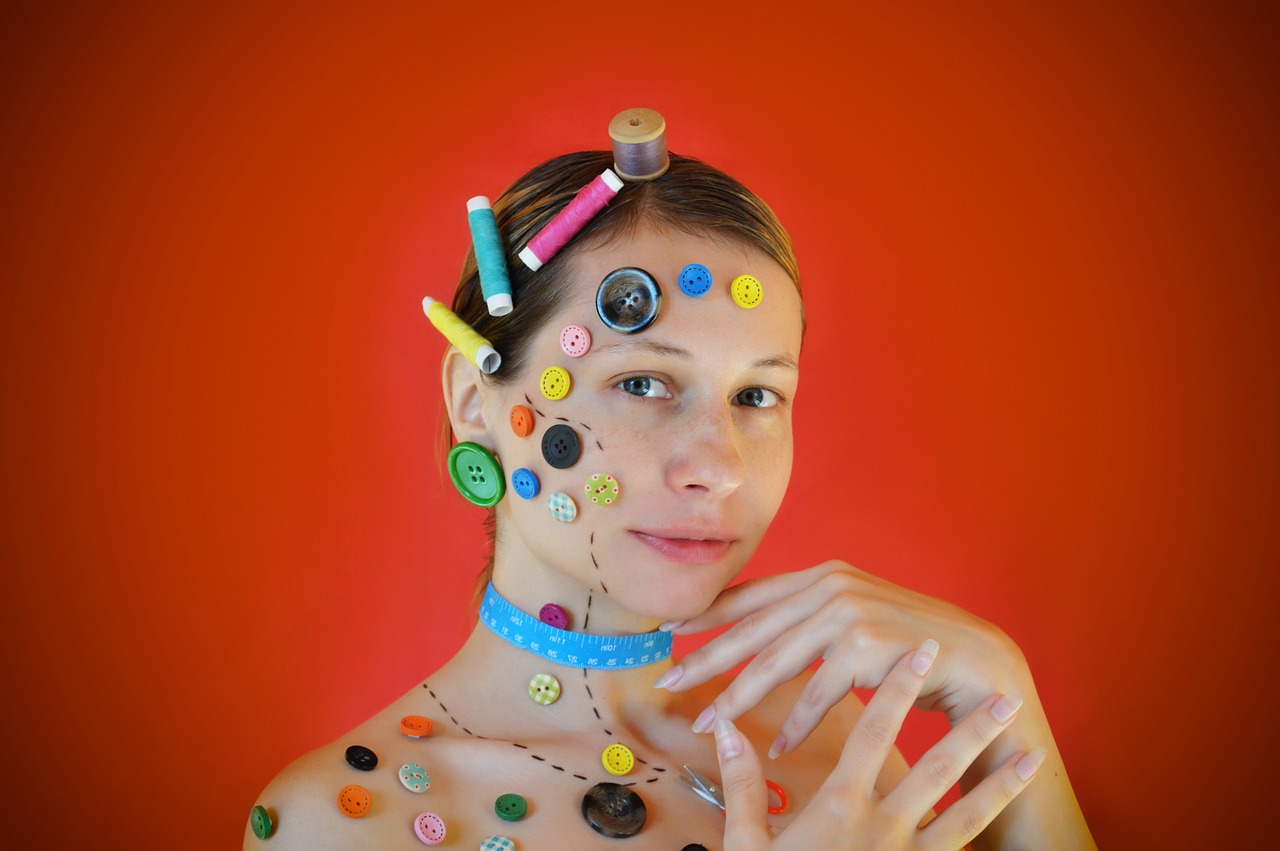
Comfort and Ergonomics
When it comes to sewing, comfort is not just a luxury; it’s a necessity. Imagine spending hours hunched over your sewing machine, straining your back and neck, all while trying to focus on your latest project. That’s a recipe for frustration, isn’t it? By creating a dedicated sewing space with ergonomics in mind, you can transform your sewing experience into one that’s not only productive but also enjoyable. This means investing in the right furniture and tools that support your body and promote good posture.
One of the first things to consider is your seating. Think about how long you typically spend sewing. If you’re anything like me, it can easily turn into a marathon session! Therefore, investing in a good ergonomic chair is crucial. Not only should it provide adequate support for your lower back, but it should also allow you to adjust the height so that your feet rest comfortably on the ground. This adjustment helps prevent strain on your legs and back, allowing you to sew for longer periods without discomfort.
Next up is lighting. Have you ever tried to sew in dim light? It’s like trying to read a book in a cave! A dedicated sewing space allows you to install lighting that works for you. Consider using bright, adjustable lamps that can be positioned to illuminate your workspace effectively. Good lighting reduces eye strain and enhances visibility, making it easier to work on intricate designs or detailed stitching. Think of it as the spotlight on your creativity, ensuring that every stitch is perfect.
Another aspect of comfort is the layout of your sewing area. A well-thought-out design can significantly enhance your workflow. Imagine having everything you need within arm’s reach—your sewing machine, fabric, tools, and patterns. This not only minimizes unnecessary movements but also allows you to maintain focus on your project. You can achieve this by using storage solutions like shelves, pegboards, or rolling carts that keep your essentials organized and accessible.
Lastly, let’s not forget about the importance of taking breaks. Even in a comfortable setup, sitting for long periods can lead to fatigue. Make it a point to stand up, stretch, and move around every so often. This simple practice can greatly improve your overall comfort and help you return to your sewing with renewed energy and creativity.
- What type of chair is best for sewing? An ergonomic chair that offers lumbar support and height adjustment is ideal for long sewing sessions.
- How can I improve lighting in my sewing space? Use adjustable task lamps that provide bright, focused light to minimize eye strain.
- What should I consider when organizing my sewing area? Keep frequently used items within reach and utilize storage solutions that suit your workflow.
- How often should I take breaks while sewing? Aim to take a break every hour to stretch and rest your eyes, which can help prevent fatigue.
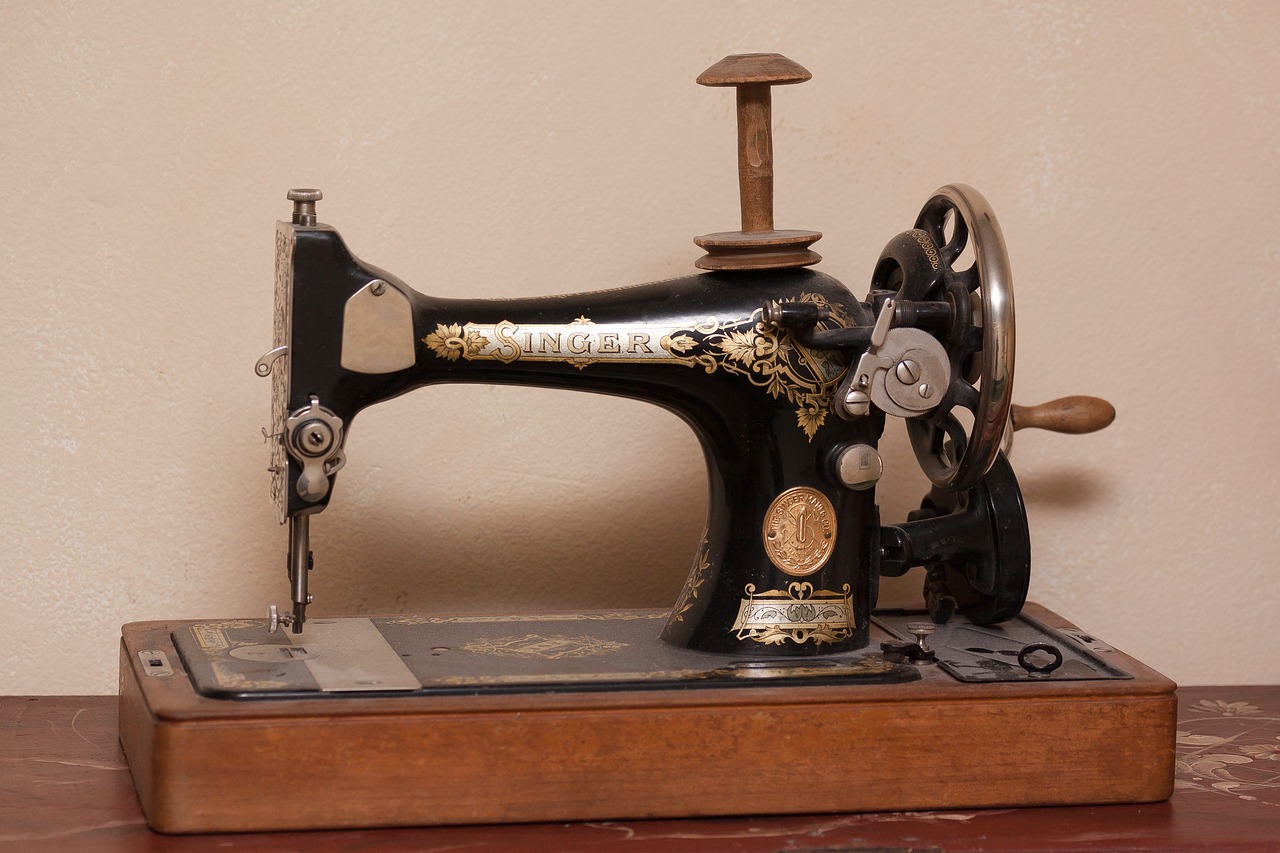
Proper Seating
When it comes to setting up your dedicated sewing space, one of the most crucial elements to consider is . Imagine spending hours hunched over your sewing machine, only to end up with a sore back and stiff neck. Not exactly the creative bliss we all aspire to, right? Investing in ergonomic seating can be a game-changer for sewing enthusiasts and professionals alike. A chair designed with your comfort in mind not only enhances your experience but also allows you to focus on your craft without the nagging distractions of physical discomfort.
But what makes a chair truly ergonomic? Here are some key features to look for:
- Adjustable Height: A chair that allows you to adjust its height ensures your feet can rest flat on the floor, promoting better posture.
- Lumbar Support: Good lumbar support helps maintain the natural curve of your spine, reducing the risk of back pain.
- Armrests: Having adjustable armrests can relieve pressure on your shoulders and neck, especially during long sewing sessions.
- Breathable Fabric: Chairs made from breathable materials can keep you comfortable, preventing overheating during those marathon sewing days.
Additionally, consider your sewing table's height in relation to your chair. A well-matched height can help prevent strain on your wrists and shoulders as you work. You might also want to incorporate a footrest if your chair is higher than your sewing table. This little addition can make a world of difference in keeping your posture aligned and your body relaxed.
Ultimately, the right seating can transform your sewing experience from a chore into a delightful escape. It’s like upgrading from a clunky old bike to a sleek new ride; the difference is palpable. So, take the time to find a chair that not only fits your body but also complements your sewing space. You’ll thank yourself every time you sit down to create!
1. What is the best type of chair for sewing?
The best type of chair for sewing is one that is ergonomic, adjustable, and provides adequate lumbar support. Look for features like adjustable height and armrests to ensure comfort during long sewing sessions.
2. How can I improve my sewing posture?
To improve your sewing posture, ensure your chair is at the right height, keep your feet flat on the floor, and maintain a straight back. Consider using a footrest if necessary and take regular breaks to stretch.
3. Do I really need an ergonomic chair for sewing?
While it’s not mandatory, an ergonomic chair can significantly enhance your comfort and productivity, especially during extended sewing periods. It helps prevent strain and fatigue, allowing you to enjoy your craft more.
4. Can I use a regular office chair for sewing?
Yes, you can use a regular office chair, but make sure it has adjustable features and good support. However, investing in a chair specifically designed for sewing might provide better comfort and functionality.
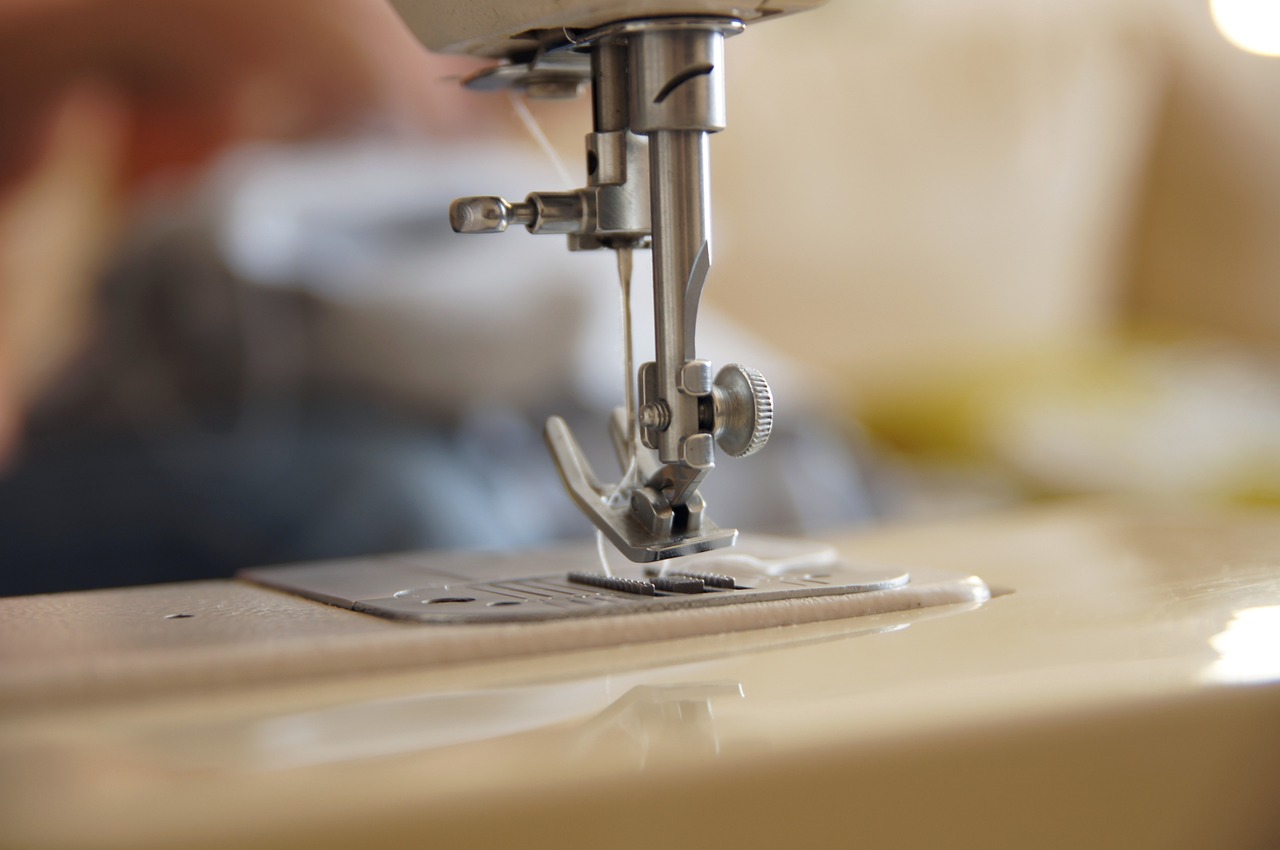
Optimized Lighting
When it comes to sewing, lighting is not just an afterthought; it's a crucial element that can make or break your creative experience. Imagine trying to thread a needle or cut intricate patterns in dim light—frustrating, right? That's why having a dedicated sewing space allows you to install the right lighting that suits your needs, ensuring you can see every detail without straining your eyes.
Good lighting not only brightens your workspace but also enhances your mood and creativity. Think about it: when you're surrounded by a well-lit environment, you're more likely to feel energized and inspired. You can choose from various lighting options to create the perfect atmosphere:
- Task Lighting: This is essential for focused work. A desk lamp with adjustable brightness can help you illuminate your sewing machine or cutting table effectively.
- Ambient Lighting: Soft, diffused light can create a warm and inviting atmosphere. Consider using floor lamps or overhead fixtures that provide general illumination without harsh glare.
- Accent Lighting: Want to highlight your fabric stash or showcase your favorite tools? Use accent lights to draw attention to specific areas of your sewing space.
Moreover, the color temperature of your lighting plays a significant role in how you perceive colors. Natural light is often the best, but if that's not an option, aim for bulbs that mimic daylight (around 5000K to 6500K). This will ensure that the colors of your fabrics and threads appear true to life, allowing you to make better decisions in your projects.
Another aspect to consider is the placement of your lighting. Position your lamps or fixtures in a way that minimizes shadows on your work surface. This way, you can see clearly without having to awkwardly shift your materials around. A well-lit sewing area not only boosts your productivity but also adds a touch of elegance to your creative haven.
In summary, optimizing your lighting is about more than just visibility; it's about creating a space that fosters creativity and comfort. So, take the time to evaluate your lighting options and make adjustments that will transform your sewing experience from a chore into a joyful endeavor.
Q: What type of lighting is best for sewing?
A: The best lighting for sewing includes a combination of task, ambient, and accent lighting, with bulbs that mimic natural daylight to ensure color accuracy.
Q: How can I reduce eye strain while sewing?
A: To reduce eye strain, ensure that your workspace is well-lit, take regular breaks, and adjust your seating position to avoid awkward angles.
Q: Is it necessary to have a dedicated sewing space?
A: While it's not strictly necessary, a dedicated sewing space can significantly enhance your organization, productivity, and overall enjoyment of the craft.
Q: How can I personalize my sewing space?
A: You can personalize your sewing space by incorporating decorative elements, choosing a color scheme that inspires you, and organizing your tools and materials in a way that reflects your style.

Personalization and Style
Creating a dedicated sewing area is not just about functionality; it’s also about personalization and style. This is your sanctuary, a place where your creativity can flourish and where you can express your unique personality through design. Imagine walking into a space that feels like an extension of yourself, filled with colors, textures, and elements that inspire you. When you take the time to personalize your sewing area, you’re not just making it visually appealing; you’re also creating an environment that encourages creativity and productivity.
One of the best things about having a dedicated sewing space is that you can incorporate decorative touches that resonate with you. Whether it’s a vibrant color scheme, wall art, or even a collection of vintage sewing tools displayed on shelves, these elements can transform a simple room into a creative haven. For instance, you might choose a calming palette of blues and greens to promote tranquility, or vibrant reds and yellows to energize your creative process. The choice is yours!
Moreover, the functional design of your sewing area is equally important. You want to ensure that it not only looks good but also meets your specific needs as a sewist. Think about the layout of your space: where will your sewing machine go? Do you have enough storage for your fabrics and tools? A well-thought-out design will help you work more efficiently while also reflecting your personal style. Consider the following:
| Element | Personalization Ideas |
|---|---|
| Color Scheme | Choose colors that inspire you or evoke a certain mood. |
| Storage Solutions | Use decorative baskets or shelves that match your style. |
| Wall Art | Add framed fabric swatches or your favorite quotes about sewing. |
| Lighting | Incorporate stylish lamps that provide good lighting and add character. |
As you personalize your space, remember that it should be a reflection of your journey as a sewist. Maybe you have a favorite fabric that has become a signature in your projects, or perhaps you’ve collected mementos from sewing classes or workshops. Displaying these items can add a personal touch that tells your story. It’s these small details that make your sewing area not just a workspace, but a creative retreat where you can immerse yourself in your passion.
In conclusion, your dedicated sewing space is an opportunity to blend functionality with personal expression. By incorporating your personal style into the design, you’ll create an inviting and inspiring environment that enhances your sewing experience. So, roll up your sleeves, let your creativity flow, and make that space truly yours!
- What are some budget-friendly ways to personalize my sewing space?
You can use paint, repurpose furniture, and add DIY decor items to enhance your space without breaking the bank. - How can I optimize storage in a small sewing area?
Utilize vertical space with shelves, use under-the-bed storage, and consider multi-functional furniture. - What lighting is best for a sewing area?
Natural light is ideal, but if that’s not possible, invest in bright, adjustable task lamps that reduce eye strain.
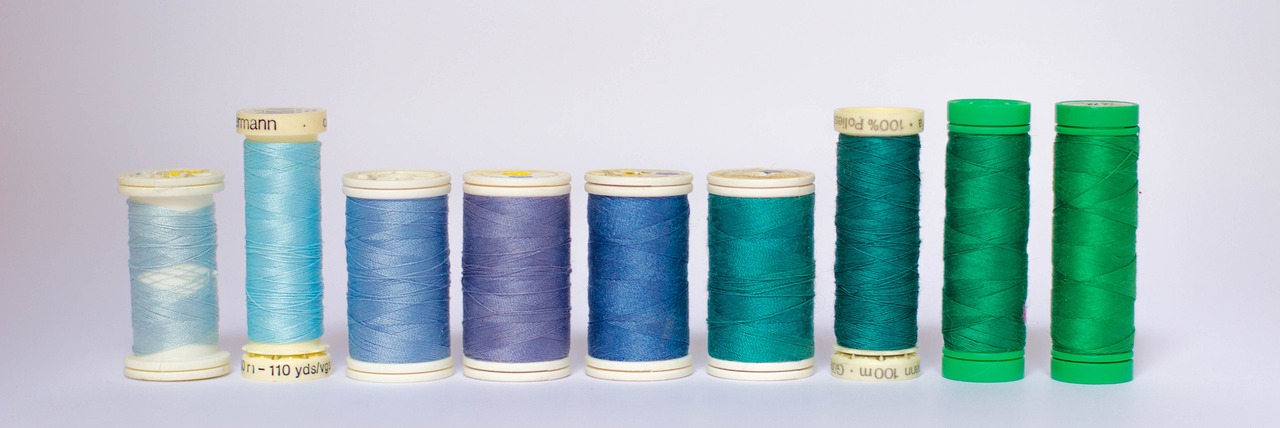
Decorative Touches
When it comes to creating a dedicated sewing space, play a crucial role in transforming a simple area into a vibrant and inspiring haven. Think of your sewing room as a canvas where every element reflects your personality and passion for sewing. By adding personal flair through colors, textures, and decorative items, you can create an environment that not only motivates you but also makes the process of sewing more enjoyable.
One of the first steps in personalizing your sewing space is to choose a color scheme that resonates with you. Bright, lively colors can energize the space, while softer hues can create a calming atmosphere. Imagine walking into a room painted in your favorite pastel shades, with fabric swatches that complement the walls. This kind of visual harmony can inspire creativity and make sewing feel like a delightful escape.
Incorporating decorative elements such as wall art, inspirational quotes, or even a bulletin board filled with fabric swatches can provide constant motivation. You might want to consider displaying your favorite sewing projects or tools as art pieces. For instance, framing a beautifully sewn quilt or hanging vintage sewing tools can add a touch of nostalgia and charm to your workspace.
Furthermore, don't underestimate the power of functional decor. Items such as stylish storage boxes, colorful thread organizers, and decorative baskets can help keep your space tidy while contributing to the overall aesthetic. When everything has its place, you can focus more on your projects rather than searching for misplaced items. A well-organized sewing area not only looks appealing but also enhances your workflow.
Lastly, consider adding personal touches that tell your story. Perhaps you have a collection of sewing books or magazines that you love; displaying them on a shelf can make your sewing space feel more inviting. Or maybe you want to add plants or flowers to bring a bit of nature indoors. These small details can make a significant difference, creating a space that feels uniquely yours and encourages you to dive into your next sewing adventure.
- How can I make my sewing space more organized?
Consider using storage solutions like bins, shelves, and pegboards to keep your tools and materials neatly arranged. Labeling everything can also help you find what you need quickly.
- What colors are best for a sewing room?
Choose colors that inspire you. Bright colors can energize the space, while softer tones can create a calming effect. It's all about what makes you feel good!
- How can I personalize my sewing area?
Add decorative elements that reflect your style, such as artwork, inspirational quotes, or even a display of your favorite sewing projects.
- Is lighting important in a sewing space?
Absolutely! Good lighting reduces eye strain and enhances visibility. Consider adding task lighting for detailed work and ambient lighting for a cozy atmosphere.
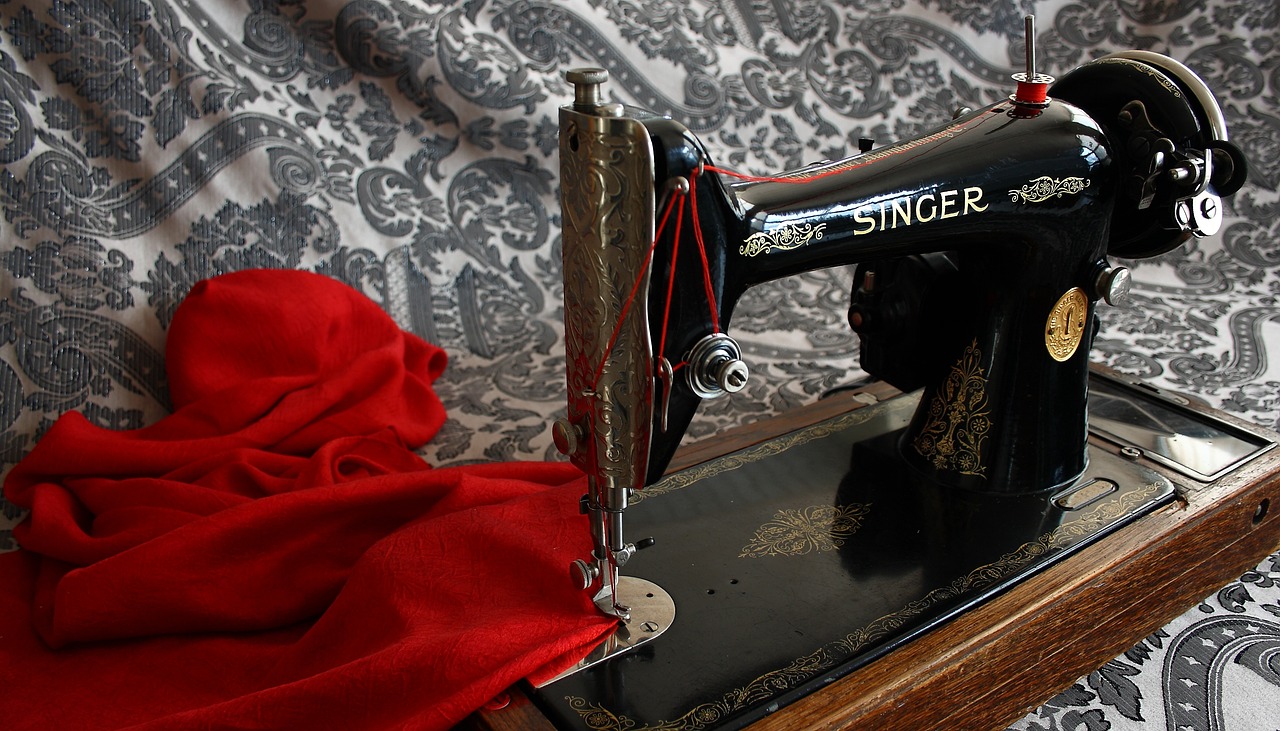
Functional Design
When it comes to creating a dedicated sewing space, is key. Imagine stepping into a room that not only looks good but also works for you like a well-oiled machine. The layout should cater to your sewing habits and preferences, ensuring that everything is within arm's reach. Think about how you can arrange your sewing machine, cutting table, and storage solutions in a way that maximizes efficiency. A well-planned space can eliminate unnecessary movement, allowing you to focus on your creativity rather than searching for tools or materials.
One of the first steps in achieving a functional design is to assess your sewing style. Do you prefer to cut fabrics on a large table, or do you often work on smaller projects that require less space? Tailoring your sewing area to fit your needs can make a world of difference. For instance, if you often find yourself using various tools, having a tool organizer within easy reach can save you time and frustration. You might consider a pegboard for hanging scissors, rulers, and other essentials, keeping them visible and accessible.
Moreover, think about the storage options that will best suit your fabric collection and supplies. Clear bins or labeled drawers can help you categorize your fabrics by color, type, or project, making it a breeze to find what you need. A well-organized space not only looks tidy but also sparks joy and creativity. You could even create a small inventory list of your fabrics and supplies, which you can keep on the wall or in a digital format. This way, you'll always know what you have on hand, and you can plan your projects accordingly.
Another essential aspect of functional design is ensuring that your workspace is comfortable. Investing in a sturdy, adjustable chair can make long sewing sessions much more enjoyable. After all, who wants to be distracted by back pain when they’re trying to create something beautiful? Additionally, consider the height of your tables and machines. A table that is too high or too low can lead to awkward posture, which can be detrimental to your health over time. A good rule of thumb is to have your sewing machine at elbow height when sitting, allowing for natural movement.
Finally, don’t forget about lighting. A well-lit space is crucial for any sewing enthusiast. Natural light is ideal, but if that’s not an option, consider installing bright, adjustable task lighting that can illuminate your work area without causing glare. Good lighting not only enhances visibility but also helps reduce eye strain, making those late-night sewing sessions more enjoyable.
In conclusion, a functional design goes beyond aesthetics; it’s about creating a space that enhances your sewing experience. By thoughtfully arranging your tools, optimizing storage, ensuring comfort, and prioritizing lighting, you can cultivate a sewing area that inspires creativity and productivity. So, roll up your sleeves, get organized, and transform your sewing space into a haven of creativity!
- What are the essential items I need for a functional sewing space?
Some essential items include a sewing machine, cutting mat, rotary cutter, rulers, and storage solutions for fabrics and tools. - How can I make my sewing space more comfortable?
Investing in ergonomic furniture, ensuring proper lighting, and maintaining a tidy workspace can greatly enhance comfort. - Is it necessary to have a dedicated sewing room?
While not necessary, having a dedicated space can significantly improve your sewing experience by reducing distractions and increasing organization.
Frequently Asked Questions
- Why should I create a dedicated sewing space?
Having a dedicated sewing space allows you to organize your tools and materials efficiently, leading to a more enjoyable sewing experience. It minimizes distractions, boosts your productivity, and provides a creative environment that can inspire your projects.
- What are some tips for organizing my sewing space?
Start by categorizing your supplies into groups such as fabrics, threads, and patterns. Use storage solutions like bins, shelves, and pegboards to keep everything in its place. Labeling containers can also help you find what you need quickly, reducing clutter and saving time.
- How can a dedicated sewing space improve my productivity?
With everything set up in one place, you can dive straight into your projects without wasting time on setup. A well-organized space allows for a smoother workflow, letting you focus on sewing rather than searching for tools or materials.
- What ergonomic considerations should I keep in mind?
Invest in a comfortable, adjustable chair that supports good posture. Ensure your sewing table is at the right height to prevent strain on your back and neck. Additionally, proper lighting is crucial; consider using task lighting to reduce eye strain during detailed work.
- Can I personalize my sewing space?
Absolutely! Personalizing your sewing area with colors, decorations, and inspirational items can make it a joyful place to work. Choose decor that reflects your style and makes you feel comfortable and motivated.
- What kind of lighting is best for a sewing space?
Good lighting is essential for sewing. Natural light is great during the day, but you should also invest in bright, adjustable task lighting for evening or indoor work. LED lights are a popular choice as they provide ample brightness and reduce eye strain.
- How do I maintain my sewing space?
Regularly clean and declutter your sewing area to keep it organized. Take a few minutes after each project to put things back in their designated spots. This habit will help maintain a tidy and inspiring workspace for future projects.



















